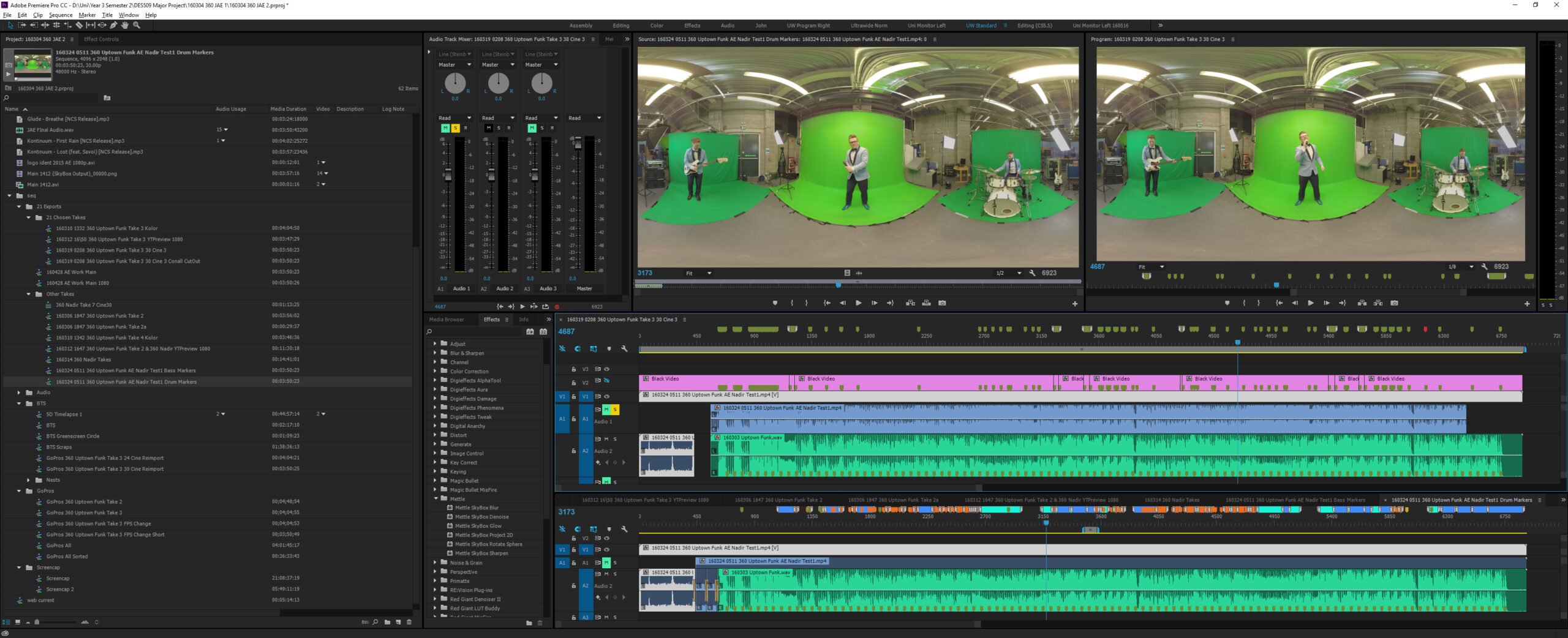

- WHY DENOISER III REMOVES MASKS IN AFTER EFFECTS SKIN
- WHY DENOISER III REMOVES MASKS IN AFTER EFFECTS FULL
- WHY DENOISER III REMOVES MASKS IN AFTER EFFECTS FREE
WHY DENOISER III REMOVES MASKS IN AFTER EFFECTS FREE
Sheetįirst popularized in Korea, most sheet masks contain moisturizing hyaluronic acid, ceramides, which help restore the skin’s barrier, and antioxidants, which defend against free radicals.
WHY DENOISER III REMOVES MASKS IN AFTER EFFECTS FULL
Others are full of hydrating hyaluronic acid or antioxidants like vitamins C and E. Some contain acids, such as glycolic and salicylic, that exfoliate and combat acne.
WHY DENOISER III REMOVES MASKS IN AFTER EFFECTS SKIN
They can also be used for any skin concern. With a rubber-like texture that’s super easy to remove, these masks are best for those who don’t like mess. Typically non-irritating, they also break down dead skin cells to tone and brighten skin. Enzymeįruit enzymes, such as those derived from pineapples and papayas, are another way to exfoliate. These mild acids work to remove dead cells built up on the surface of the face, leaving skin looking brighter and feeling smoother. ExfoliatingĬhemical exfoliants, like glycolic acid and lactic acid, feature heavily in exfoliating face masks. Gel formulas typically include cucumber and aloe vera to soothe and calm the skin, making them ideal for sensitive types. With added hyaluronic acid, thicker cream masks can be great for particularly dry skin that needs a healthy dose of hydration. However, as activated charcoal can absorb toxins inside the body, it’s thought that it can also remove dirt and other impurities from the surface of the skin. There’s little evidence to support the use of charcoal face masks. Serbon notes that they can be a little drying, so dry skin types may want to look elsewhere. The two main types of clay masks - kaolin and bentonite - absorb excess oil and are suitable for both oily and acne-prone skin. ClayĪesthetician René Serbon says clay masks, which are rich in minerals, are great for revitalizing the skin. Ideal for all skin types, mud masks are designed to give a deep cleanse.Īlthough these masks look similar to the clay variety, they’re water-based, which makes them more hydrating.ĭifferent mud formulas contain different ingredients, but you’re likely to spot various acids and fruit extracts in the list. Why? Because certain ingredients and face-mask types go hand-in-hand. The list may be lengthy, but it’s easy to navigate. Now that you know which ingredients to pinpoint, you’ll want to narrow down the kind of face mask that’s best for you and your skin. Your key ingredients often determine the type On the natural side, opt for the likes of yogurt and pineapple, which can be used to exfoliate skin.

Look for face masks containing ingredients like: Oily skinĪnything that removes excess oil and helps reduce pore-clogging is ideal for oily skin. They work to protect the skin from the things that cause fine lines, such as pollution and sun damage. Vitamin E is also an effective anti-aging option, along with resveratrol and ferulic acid. As an antioxidant, it boosts collagen production to help firm skin. Vitamin C is, again, an ingredient to watch for.

Fine linesĪlthough deeper wrinkles will likely require a trip to your dermatologist’s office, certain face masks can help minimize the appearance of fine lines. Moisturizers such as avocado or shea butter can also soften and smooth skin. Dry skinĭry skin needs serious hydration, meaning you’ll want to use a face mask filled with water-retaining hyaluronic acid. Cheung notes that Kojic acid, azelaic acid, and licorice root work to lighten and brighten pigmentation too.Īnd exfoliating ingredients such as alpha hydroxy acids (AHAs), lactic acid, and pineapple can help remove dead, discolored skin from the surface. Struggling with dark marks? With its ability to prevent hyperpigmentation, vitamin C is your new hero ingredient.ĭr. Jessie Cheung, while clay and charcoal can soak up excess oil. Oatmeal and aloe vera will soothe, according to board-certified dermatologist Dr. Look for salicylic acid, benzoyl peroxide, and natural ingredients like yogurt and papaya to remove dead skin and pore-clogging substances. While face masks aren’t a long-term remedy for acne, they can help calm inflamed skin and prevent breakouts. Dhingra explains, “The ingredients should suit your skin type and ideally address a specific concern.” The answer is pretty simple: Know your skin and then head straight to the ingredients list.ĭr. With hundreds of face-mask formulas out there, which one should you pick? Your skin concern determines your key ingredients


 0 kommentar(er)
0 kommentar(er)
